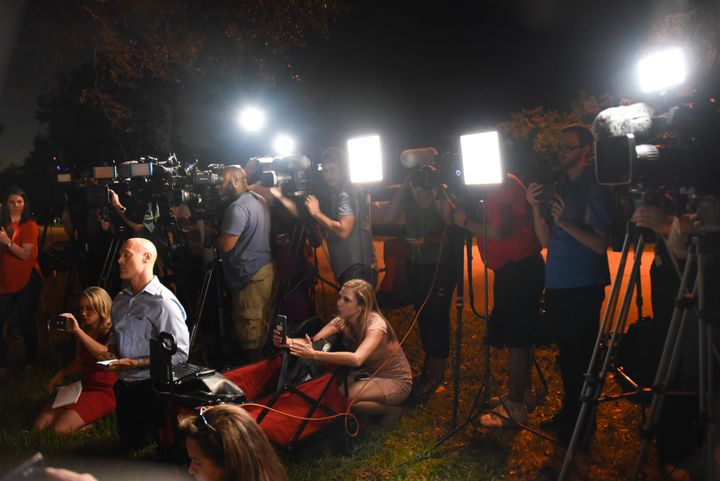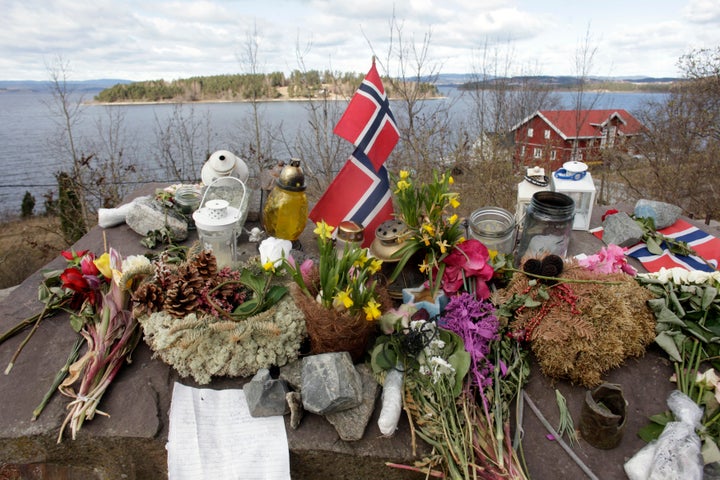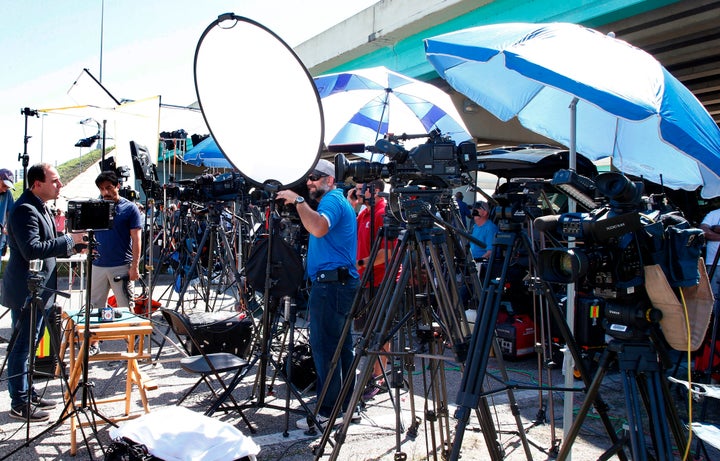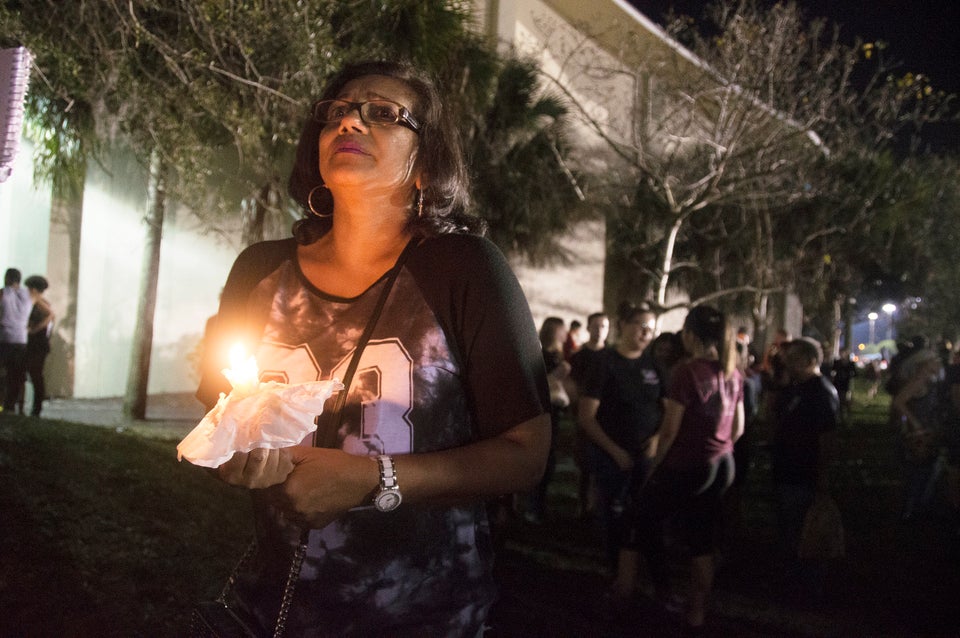
The rhythm has become familiar.
Another mass shooting. Footage on TV of a SWAT team entering a building. Telephoto images of tearful reunions. Mounting death tolls. Then, as days of coverage continue: interviews with the victims, minute-by-minute breakdowns of the incident, analysis of the shooter’s online presence, and criticism of politicians’ reactions to the crime.
All this information is coming from the hordes of local, national and sometimes even global reporters who have descended on the scene of the crime to interview survivors and community members. But what effect does the spotlight have on the recovery process of those who have just experienced a serious trauma?
While some survivors have embraced their platform ― as, most recently, some of the students at Marjory Stoneman Douglas High School in Florida have done in their push for gun control ― others may be harmed by the prodding questions and cameras.
Scientists are beginning to explore what happens to survivors of tragedies when their need for compassion, understanding or privacy clashes with a journalist’s duty to inform the public.
When media interviews have mental health consequences

Research on the effects of media interactions with trauma survivors is limited because catastrophes like mass shootings and terrorist attacks are impossible to predict, which makes them difficult to study, said Anne K. Jacobs, an expert on psychological recovery after trauma.
But the studies that do exist highlight the possibility that interactions with journalists or exposure to the coverage could actually worsen the harm done to victims, especially those who may already be at a higher risk of post-traumatic stress disorder.
The majority of survivors report either positive or neutral dealings with individual reporters. However, researchers in Europe have demonstrated that the sum total of interacting with the press might exacerbate feelings of distress, sadness and shame in some survivors, affecting their PTSD symptoms and recovery.
In a study of students who were present at Jokela High School in Finland during a 2007 mass shooting, researchers found that 1 in 5 students who were interviewed by members of the media reported feeling worse afterward. This was most common among those who were closest to what happened.
This finding is reminiscent of a study of 135 victims of individual crimes in Germany, where researchers found that two-thirds were saddened ― and 48 percent frightened ― after being exposed to TV, print or radio reports about their own cases. They also found that those with more PTSD symptoms tended to think about the media coverage negatively, but that this relationship lessened over time.
In perhaps the most compelling case ― a study of the 285 survivors of the 2011 mass shooting in Oslo and Utøya Island, Norway ― researchers found that most individuals had positive interactions with media. But 13 percent said that participating in media coverage of the event turned out to be distressing, and 11 percent said they regretted participating in the end.
Once again, those with higher levels of post-traumatic stress were the most likely to regret participating in interviews.
This points to two possible explanations, said the study’s lead researcher, Siri Thoresen of the Norwegian Centre for Violence and Traumatic Stress Studies: Being interviewed by journalists could be more difficult for people with more symptoms of post-traumatic stress, and/or the negative interview experience itself could trigger anger or shame, leading to a magnification of post-traumatic stress symptoms initially caused by the tragedy.
It’s difficult to tease out this difference, Thoresen said, because people who have the most symptoms of post-traumatic stress tend to be the people who witnessed or experienced the most violence — which is what makes journalists want to approach them in the first place.
To dig into the issue further, Thoresen published a follow-up study to look into what, exactly, made media interactions positive or negative for survivors. Among 192 participants in this subsequent paper, negative and positive experiences were equally distributed. But she also uncovered some disturbing anecdotes in which survivors felt tricked, betrayed or pressured by journalists.
Some complained about the media’s sensational approach to the story. For example, one person said they were offended at being asked to name survivors who didn’t help others during the attack. Another said they were lured into an interview to discuss something unrelated to the attacks, and then ambushed with questions about the event. A third person gave an interview to a local media outlet and then felt betrayed when the interview and photo was sold to a foreign newspaper without their knowledge or permission.
Survivors may not be in a condition to consent to interviews
Perhaps some of the most alarming anecdotes in the Norwegian study had to do with the aggressive approach to survivors in the first place. Some described being contacted by news media while they were still on the island and still being shot at.
One survivor said a journalist stuck a camera in their face as they were coming ashore from Utøya and asked how they were feeling.
“I’ve only just got away. I’ve just seen a friend of mine get killed,” they recalled. “So it’s not an appropriate time for questions like that, to be asking that way.”
In the same vein, survivors of two train crashes in Sweden told researchers in another qualitative study that they felt violated by photographers and reporters after the collision because they were being asked for photos and interviews even though they were still dizzy and in shock.
Similarly, teens who were interviewed by the media immediately after the high school shooting in Finland had blacked out from the trauma of the experience to the point that they couldn’t remember answering journalists’ questions in the first place.
Feelings of disorientation, sometimes to the point of blackout, are to be expected when escaping from a traumatic situation, Jacobs said. As the human body goes into “fight or flight” mode, a person’s mind is so focused on simply surviving that they can be temporarily unable to process other kinds of information.
“Signs that someone is overwhelmed include: looking glassy eyed and disoriented, having difficulty responding to questions, showing regressive behavior, uncontrollable crying, rocking, or being extremely withdrawn,” Jacobs said. “Showing these reactions may help the viewing audience understand the impact of a trauma, but these reactions are signs that the individual may not be able to truly consent to interactions with the media.”
How journalists should approach trauma victims

If journalists want to be mindful of their potential effect on sources, they may want to consider giving up a measure of control that they’re used to for other stories, Thoresen suggested.
“A positive experience [for] our participants was connected to a sense of control, for example preparing the victims for questions, sticking to the prepared questions, respect for details the victims did not want to share in public,” she said. “And coverage in line with expectations established in the interview.”
Thoresen said this seems to align with guidelines for ethical reporting on traumatized people — most notably those published by Columbia Journalism School’s Dart Center — that are already online and available for anyone to read.
Whether newsrooms and editors prioritize this kind of training is another question entirely. A 2010 survey of 126 U.K. reporters found that 95 percent hadn’t received any training on intrusive reporting (that is, approaching and interviewing an actively grieving person).
But no matter how experienced or well-trained an individual journalist is, the pressure reporters are under to nab exclusive interviews can end up spilling over into the way survivors are treated, notes Norman P. Lewis, an expert on journalism ethics at the University of Florida’s College of Journalism and Communications.
Lewis, who co-authored a study on how some survivors of the 2007 Virginia Tech shooting experienced and interpreted their interactions with journalists, argues in his paper that instead of jockeying for exclusive, individual interviews of the most traumatized survivors, reporters should coordinate a press pool to share reporting and information, just as they do for coverage of the president or other officials where physical space is limited.
“When you’ve got journalists outnumbering survivors 4-to-1, and everyone’s clamoring for the same interview with the same person, it creates a sense of being under siege,” Lewis said.
“It doesn’t really matter that they’re all good people doing good work and they’ve all followed the Dart directives and they’re all acting in a responsible, caring manner,” he continued. “By their sheer number, it becomes an overwhelming sense of invasion.”
One anecdote from Lewis’ study illustrates survivors’ dire need for this kind of arrangement. Derek O’Dell, who had been shot in the arm in a classroom during the Virginia Tech shooting, actually wanted to be interviewed by national TV news shows so he could explain what he and his classmates endured.
On the day of the shooting, after he had been treated, he went to his university’s media center and sat for 15 interviews, one after the other. The process took almost six hours, and Lewis said O’Dell didn’t have anything to eat that whole time. Journalists were so desperate for their chance to sit down with him that one reporter even grabbed the arm that had been shot.
“It’s not like I’m going to get something different than you got if we’re all talking to the same person,” Lewis said. “Journalists have to understand that yes, they can behave well, but sometimes just too many of us creates harm in and of itself.”
In a similar vein, establishing media-free zones where survivors and loved ones can gather without the glare of cameras could also go a long way to helping people feel safe and supported after an attack, said Jacobs.
Researchers also point back to the Germany study about victims’ perceptions of media coverage. The more inaccurate the victims thought the coverage was, the angrier and more exposed they felt — a lesson to journalists that they should take extra care in confirming the details around a tragedy.
Lewis’ last bit of advice for journalists is to be extra sensitive to sources who may be naive to the business of the news and may not think about how 30-minute interviews can be cut to 30-second clips, syndicated to other news outlets or bumped entirely from the piece.
Given these possibilities, Lewis said, it’s important for reporters to reverse their normal professional practice and ask sources what they think the most important detail of their story is, and what they would like to convey to the public.
“When you’re in this kind of a stressful setting in which shock can be a factor, in which we journalists can unwittingly cause or exacerbate pain, we have to flip the script and give the control to the interviewee,” he said.

